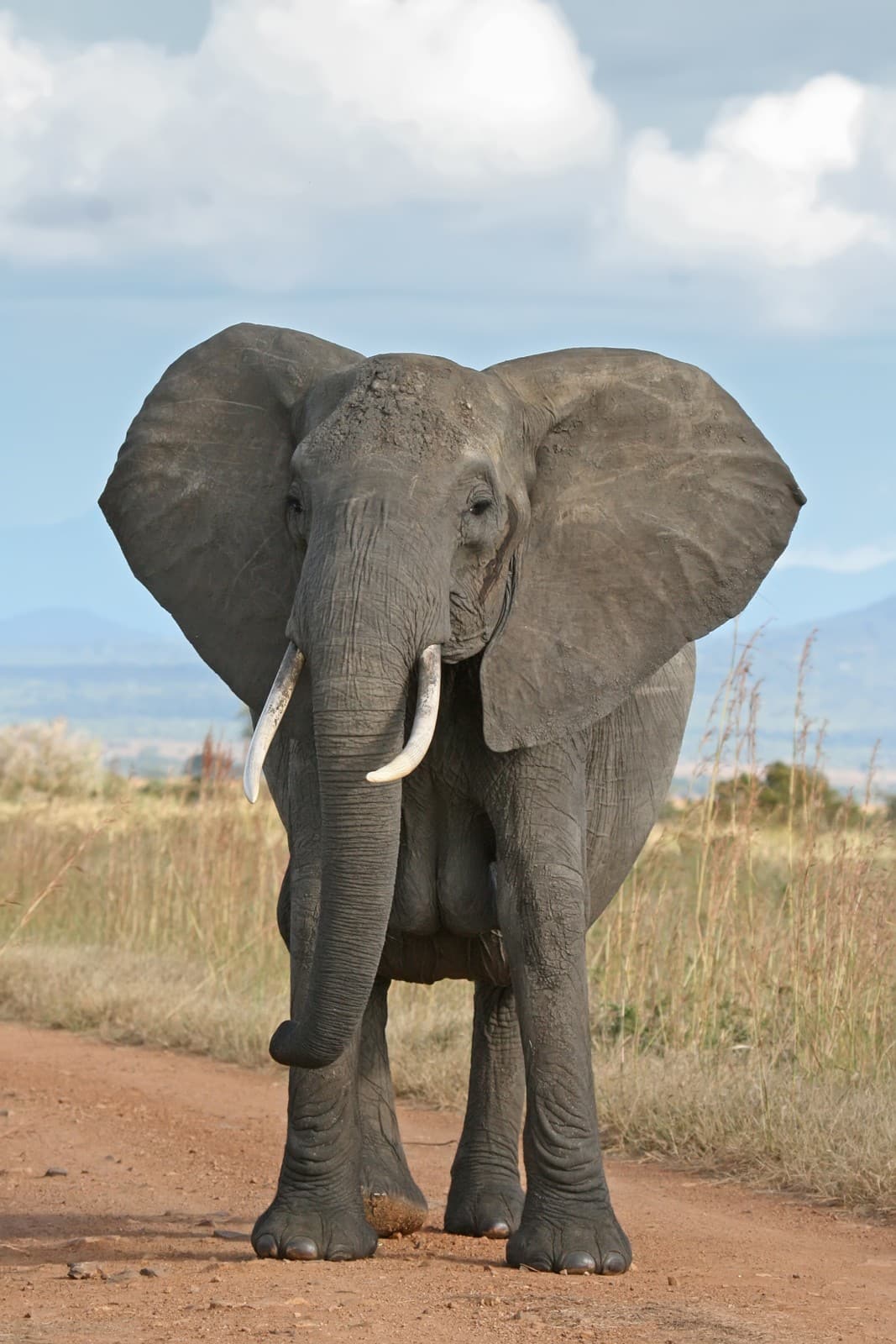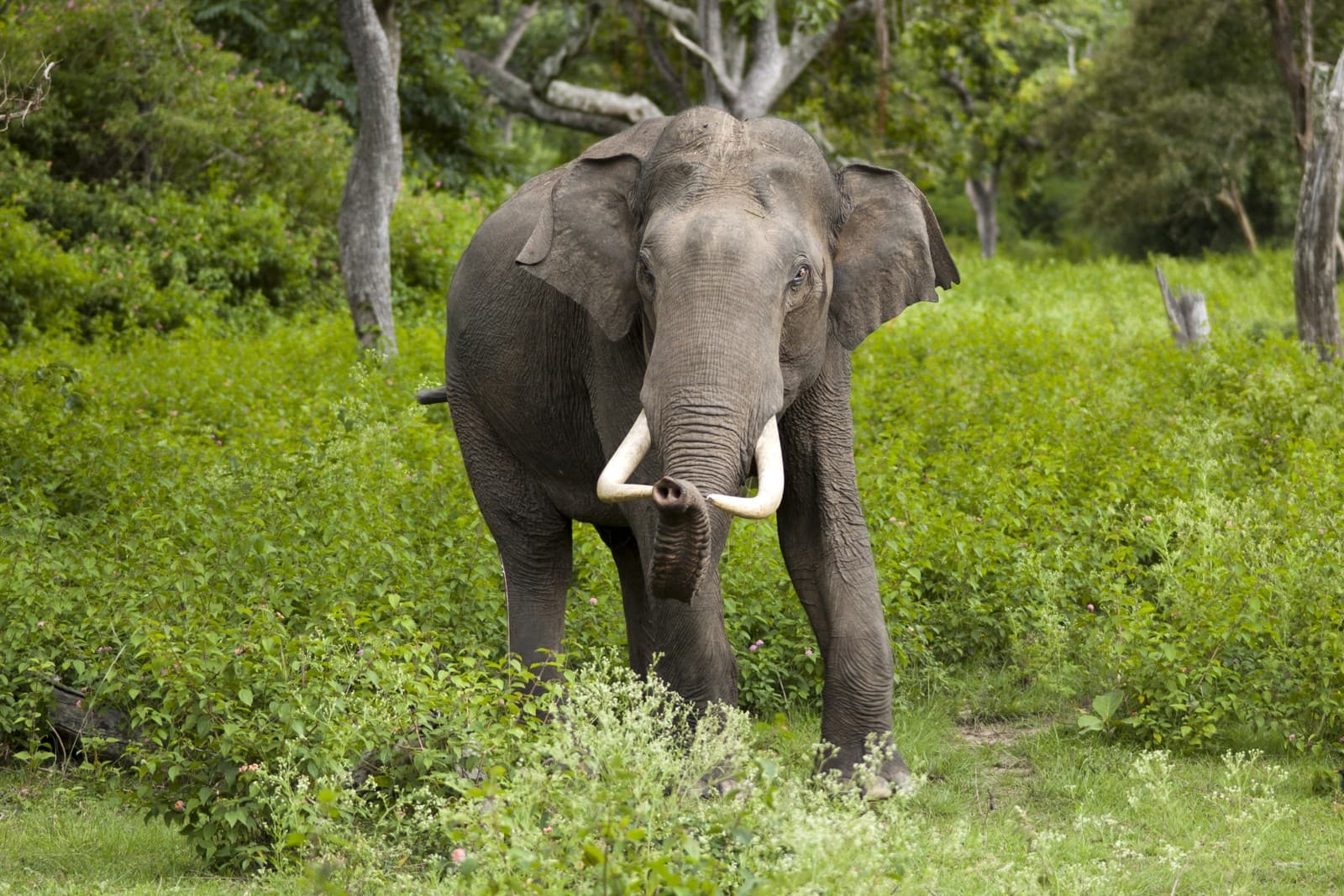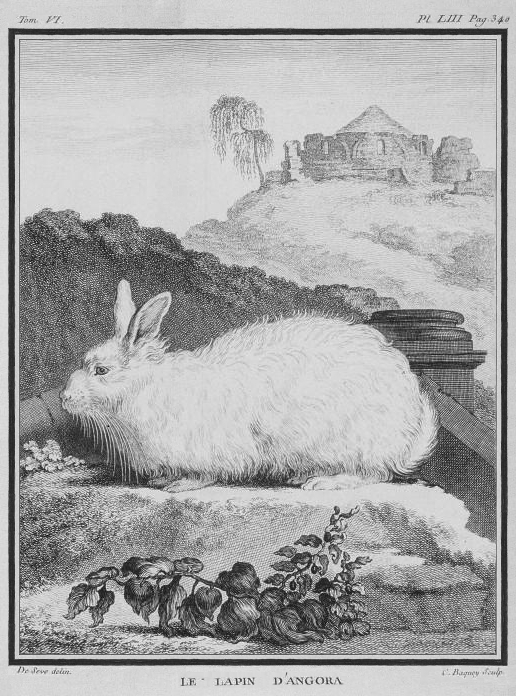African Elephant vs Asian Elephant: A Complete Comparison
When comparing African elephants vs Asian elephants, several distinct characteristics set these magnificent creatures apart. African elephants are notably larger, with bulls reaching heights of 13 feet (4 meters) at the shoulder and weighing up to 13,000 pounds (5,900 kg), while Asian elephants typically reach 10 feet (3 meters) and weigh up to 11,000 pounds (5,000 kg).
The most visible differences between African and Asian elephants lie in their ears, tusks, and overall body shape. African elephants possess larger, fan-shaped ears that resemble the continent of Africa, while Asian elephants have smaller, rounded ears. These distinctive features reflect their evolutionary adaptations to different climates and habitats.
Physical Differences Between African and Asian Elephants

© Muhammad Mahdi Karim / GFDL 1.2
An African elephant displaying its characteristic large ears and impressive tusks, demonstrating the distinct features that separate it from its Asian cousin.

© Yathin S Krishnappa / CC BY-SA 3.0
An Asian elephant in its natural forest habitat, showing its smaller ears and distinctive high-domed head shape.
| Feature | African Elephant | Asian Elephant |
|---|---|---|
| Size | 10-13 ft (3-4 m) tall | 8-10 ft (2.4-3 m) tall |
| Weight | Up to 13,000 lbs (5,900 kg) | Up to 11,000 lbs (5,000 kg) |
| Ears | Large, fan-shaped | Smaller, rounded |
| Tusks | Both sexes have tusks | Males only typically have tusks |
| Head Shape | Sloping forehead | Twin-domed forehead |
| Trunk Tips | Two finger-like projections | One finger-like projection |
Habitat and Behavior Differences
African elephants primarily inhabit savannas, grasslands, and forests across sub-Saharan Africa. They’ve evolved larger ears to help regulate body temperature in hot climates. Asian elephants prefer tropical forests and woodland areas across South and Southeast Asia, where their smaller ears are better suited for moving through dense vegetation.
Diet and Feeding Habits
While both species are herbivores, their dietary preferences differ based on habitat availability:
- African elephants: Primarily grazers, consuming grasses, leaves, bark, fruits, and tree branches
- Asian elephants: More selective browsers, focusing on tree foliage, bamboo, and cultivated crops
Conservation Status and Threats
Both elephant species face significant conservation challenges:
-
African elephants: Vulnerable (Savanna) and Critically Endangered (Forest)
- Population: Approximately 415,000
- Main threats: Poaching for ivory, habitat loss
-
Asian elephants: Endangered
- Population: Approximately 45,000
- Main threats: Habitat fragmentation, human conflict
Which Species Is Stronger?
When comparing strength between African and Asian elephants, several factors come into play:
- Size Advantage: African elephants are generally larger and stronger
- Muscle Mass: African elephants possess greater muscle mass due to their larger size
- Tusks: African elephants typically have larger tusks for defense
- Temperament: Asian elephants are generally considered more docile
However, both species are incredibly powerful and should be respected as wild animals capable of tremendous strength.
Frequently Asked Questions
Which elephant species is more intelligent?
Both African and Asian elephants demonstrate remarkable intelligence. Asian elephants are often considered easier to train, but this reflects temperament rather than intelligence differences.
Can African and Asian elephants interbreed?
No, African and Asian elephants cannot interbreed. They are separate species with different numbers of chromosomes, making reproduction between them impossible.
Which elephant species lives longer?
Both species have similar lifespans, typically living 60-70 years in the wild. The longest recorded lifespans exceed 80 years in captivity for both species.
Are all elephants endangered?
While all elephant populations face threats, their conservation status varies. African forest elephants are Critically Endangered, African savanna elephants are Vulnerable, and Asian elephants are Endangered according to the IUCN Red List.









